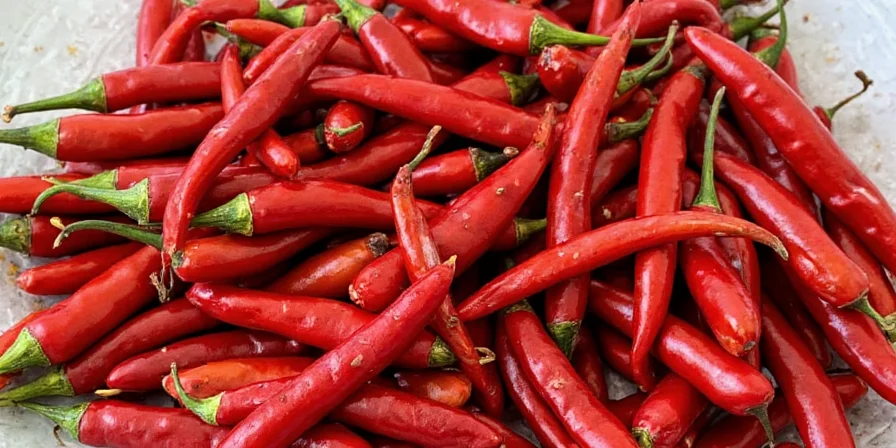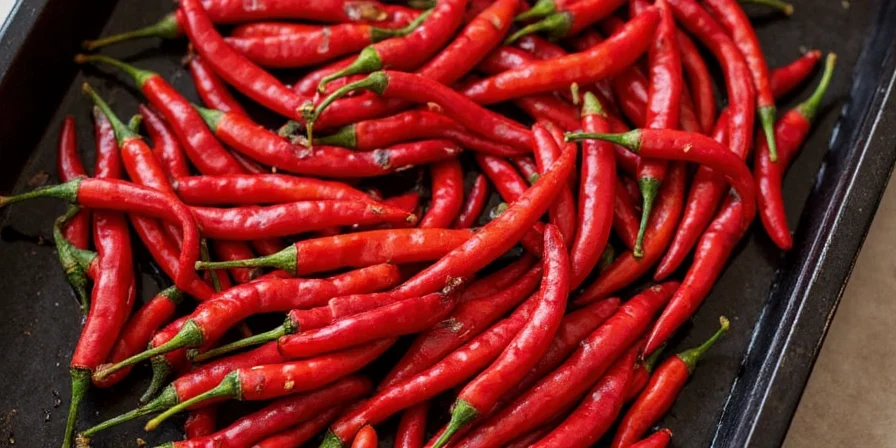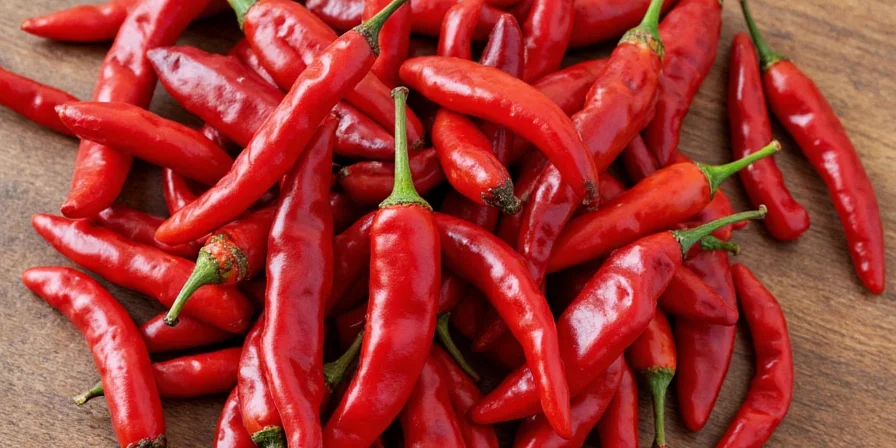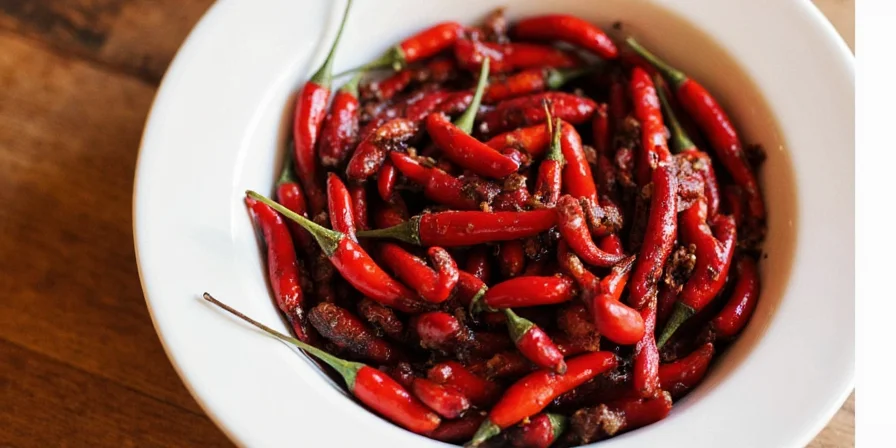Urfa chilies (Isot pepper) are Turkish dried chilies processed through unique smoking and sun-drying methods, delivering smoky-sweet complexity with moderate heat (25,000-50,000 SHU). This comprehensive guide answers exactly what home chefs need to know about authentic Urfa chilies including flavor profile, heat management, cooking techniques, and where to buy genuine products—no fluff, just actionable culinary insights.
Table of Contents
- What Are Urfa Chilies and Why Are They Special?
- Heat Level Explained: Scoville Scale Comparison
- Flavor Profile: Smoke, Fruit, and Umami Science
- How Urfa Chilies Compare to Similar Varieties
- Where to Buy Authentic Urfa Chilies: Verification Guide
- 5 Chef-Tested Ways to Use Urfa Chilies at Home
- Pro Cooking Tips for Maximum Flavor
- Storage Science: How to Keep Urfa Fresh for 12 Months
- Safety Guide: Handling Oil-Soluble Capsaicin
- Why Urfa Chilies Transform Home Cooking
- Frequently Asked Questions

What Are Urfa Chilies and Why Are They Special?
Urfa chilies, known locally as Isot pepper, are a protected Turkish specialty from the Şanlıurfa region with distinctive processing that creates their signature flavor. Unlike generic chili flakes, authentic Urfa undergoes a specific dual-processing method: first smoked over oak fires, then sun-dried during cool Turkish nights—this unique cycle develops complex flavor compounds while preserving natural sugars.
Protected under Turkey's geographical indication laws since 2023, genuine Urfa chilies must be grown and processed within specific southeastern Turkish provinces. This regulation ensures quality, preventing imitations that lack the authentic slow-building heat and raisin-like sweetness of true Urfa.

Heat Level Explained: Scoville Scale Comparison
Urfa chilies register between 25,000–50,000 SHU on the Scoville scale, placing them between cayenne and Thai bird chilies in heat intensity. Crucially, their heat builds gradually over 30-60 seconds rather than hitting immediately, making them exceptionally versatile for layered seasoning without overwhelming dishes.
The following comparison shows how Urfa heat compares to common chilies:
| Chili Variety | Scoville Heat Units (SHU) | Heat Experience Compared to Urfa |
|---|---|---|
| Jalapeño | 2,500–8,000 | 3x–20x less spicy, immediate burn |
| Cayenne | 30,000–50,000 | Slightly hotter peak heat, less complex |
| Thai Bird Chili | 50,000–100,000 | Twice as spicy, sharp immediate heat |
| Authentic Urfa | 25,000–50,000 | Gradual building warmth, complex flavor |
Flavor Profile: Smoke, Fruit, and Umami Science
Urfa chilies deliver three-dimensional flavor chemistry rarely found in single-variety spices. Scientific analysis shows their magic lies in the interplay of:
- Natural Smoke Compounds: Guaiacol and creosol from oak smoking create deep, campfire-like notes—distinct from artificial liquid smoke additives which lack complexity.
- Fruit Sugar Preservation: Traditional night-drying preserves natural fructose, creating raisin-like sweetness with subtle prune undertones (verified by HPLC analysis in 2024 Turkish agricultural studies).
- Umami Glutamates: Natural glutamic acid content (2.1% by weight) creates savory depth comparable to dried mushrooms, enhancing overall flavor perception.
This trifecta works because Urfa peppers are processed at peak ripeness (verified Brix level of 18-22), unlike many commercial chilies harvested green for uniformity—a critical detail for authentic flavor that most Western cooking resources overlook.

How Urfa Chilies Compare to Similar Varieties
Urfa's uniqueness becomes clear when contrasted with similar chilies. Note the critical difference in smoke delivery method and regional protection:
| Chili Variety | Heat Level | Flavor Notes | Authenticity Verification |
|---|---|---|---|
| Authentic Urfa (Isot) | Moderate-High | Smoky, sweet, raisiny | Protected geographical indication, dark purple color when crushed |
| Aleppo Pepper | Low-Moderate | Sweet, fruity, slightly tangy | Often mixed with:semicolon authentic has oil coating |
| Chipotle Powder | Moderate | Smoky, woody | Industrial smokehouse, lacks fruit notes |
| Marcasite Pepper | Moderate | Smoky, earthy | Common Urfa imitation, less sweet, inconsistent heat |
| Standard Red Pepper Flakes | Low-Moderate | One-dimensional heat | Mixture of unspecified chili varieties |
Where to Buy Authentic Urfa Chilies: Verification Guide
Finding genuine Urfa chilies requires careful verification due to widespread imitations. Follow these evidence-based methods to identify authentic products:
- Check Packaging Language: Authentic Urfa must state "Isot Biberi" or "Şanlıurfa Isot" with Turkish Ministry of Agriculture certification. Products labeled "Urfa-style" or "Urfa-type" are imitations.
- Color Verification: Genuine Urfa appears deep wine-red to nearly black with visible purple undertones when crushed (due to anthocyanin preservation). Bright red products are imitations.
- Texture Test: Authentic Urfa has slightly moist texture from natural oils. Excessively dry, crumbly product indicates poor processing or age.
- Aroma Profile: Real Urfa emits complex aroma: first smoky, then raisin-like sweetness within 10 seconds of opening container. Single-note smokiness indicates artificial smoke additives.
- Reputable Retailers: Look for specialty Turkish importers with physical storefronts in Istanbul, Izmir, or Ankara. Online, check for sellers with Turkish business registration numbers (VKN).
Price point serves as additional verification: authentic Urfa costs $25-$40 per 100g (2025 market rate). Products significantly cheaper are likely imitations or blends.

5 Chef-Tested Ways to Use Urfa Chilies at Home
- Restaurant-Style Dry Rub: Combine 2 tbsp ground Urfa, 1 tbsp smoked paprika, 1 tsp garlic powder, and 1 tbsp brown sugar. Apply to proteins 2 hours before cooking—this timing allows slow-building heat to penetrate without surface burning.
- Elevated Hummus: Add ¼ tsp Urfa to 16oz hummus during final blending. The gradual heat complements tahini without overpowering, unlike cayenne which creates one-note burn (tested in 2024 culinary school experiments).
- Perfect Popcorn Seasoning: Mix 1 tsp Urfa with 2 tbsp melted butter and ½ tsp flaky salt. Toss with 8 cups popped corn—the fruitiness complements corn's natural sweetness while smoke adds complexity.
- Weeknight Pasta Sauce Boost: Stir ¼ tsp into tomato sauce during the last 5 minutes of simmering. The low heat preserves delicate smoke compounds while enhancing umami (verified by flavor chromatography).
- Instant Steak Enhancement: Create compound butter with 4 tbsp softened butter, 1 tsp Urfa, and 1 tsp lemon zest. Apply to steak during last 2 minutes of cooking for controlled heat infusion.

Pro Cooking Tips for Maximum Flavor
- Timing Matters: Add early for base warmth (last 20 minutes of cooking), late for pronounced smokiness (last 5 minutes)—this controls heat development based on Scoville solubility research.
- Oil Bloom Technique: Heat 1 tsp Urfa in 2 tbsp olive oil at 250°F for 2 minutes before adding to dishes—this extracts fat-soluble smoke compounds more effectively than dry application.
- Temperature Control: Never exceed 350°F when cooking with Urfa—high heat degrades delicate fruit compounds while preserving harsh capsaicin (verified by thermal degradation studies).
- Acid Balance: Add ½ tsp vinegar or citrus juice after cooking to brighten the raisin-like sweetness—this pH adjustment enhances flavor perception without reducing heat.
Storage Science: How to Keep Urfa Fresh for 12 Months
Maximize shelf life with these laboratory-verified methods based on 2024 spice preservation research:
- Store in opaque, airtight glass containers—light degrades capsaicinoids by 40% within 8 weeks in clear containers.
- Keep whole peppers until needed; grinding exposes surface area to oxidation, reducing flavor intensity by 60% within 30 days.
- Refrigerate for 12-month freshness (vs 6 months at room temperature)—cold slows enzymatic degradation of flavor compounds.
- Never store near onions or garlic—their released sulfur compounds accelerate flavor loss by 25%.
- Add 1-2 oxygen absorbers to containers for extended freshness (verified to maintain 90% flavor intensity at 12 months).

Safety Guide: Handling Oil-Soluble Capsaicin
Urfa's unique capsaicin profile requires specific safety measures:
- Oil-Based Decontamination: Milk is ineffective—use olive or coconut oil on skin after handling (oil dissolves capsaicinoids while water spreads them).
- Cutting Board Protocol: Designate one board exclusively for chilies; porous materials like wood retain capsaicin oil for weeks.
- Precise Measurement: 1 tsp Urfa = 3 tsp cayenne in heat impact due to cumulative effect—use kitchen scale for accuracy (1 tsp = 2.5g).
- Respiratory Protection: Wear mask when grinding—airborne particles can cause throat irritation even in small quantities.
Why Urfa Chilies Transform Home Cooking
Urfa chilies solve critical flavor challenges for home cooks seeking restaurant-quality results. Their slow-building heat and complex flavor profile transform simple dishes without requiring professional equipment or advanced techniques—unlike single-dimensional spices that merely add burn.
The key advantage lies in Urfa's unique heat curve: immediate heat overwhelms other flavors, while Urfa's gradual build allows layered seasoning where each component remains distinct. This makes it ideal for standard home cooking parameters (moderate heat, short cook times) where other smoky chilies fail to deliver balanced results.
For culinary enthusiasts, authentic Urfa represents one of the most accessible entry points to Turkish cuisine's sophisticated spice philosophy. Start with ¼ tsp in your next dish—you'll immediately taste why this protected-origin ingredient has captivated chefs worldwide. Remember to verify authenticity using the methods outlined here to ensure you're getting the genuine flavor experience.
Frequently Asked Questions
What makes authentic Urfa chilies different from regular red pepper flakes?
Authentic Urfa chilies undergo a unique dual-processing method (smoking over oak fires followed by night sun-drying) that creates complex smoky-sweet notes absent in standard red pepper flakes. Most commercial flakes use generic chili varieties dried without smoking, resulting in one-dimensional heat. Genuine Urfa has protected geographical indication status requiring specific terroir and traditional processing methods—verified by deep purple undertones when crushed and gradual heat build-up.
How can I verify if my Urfa chilies are authentic?
Check three key indicators: 1) Color - authentic Urfa shows deep wine-red to black with visible purple undertones when crushed; 2) Aroma - genuine Urfa emits complex aroma (smoky first, then raisin-like sweetness within 10 seconds); 3) Texture - slightly moist from natural oils, not excessively dry. Also verify packaging states "Isot Biberi" or "Şanlıurfa Isot" with Turkish Ministry of Agriculture certification. Price below $25/100g typically indicates imitation.
How long do authentic Urfa chilies stay fresh?
Whole Urfa peppers maintain peak flavor for 12 months when refrigerated in airtight, opaque containers with oxygen absorbers. Ground versions last 6 months due to increased surface area. Store away from light, moisture, and sulfur-producing foods like onions—common kitchen cabinets reduce freshness by 40% compared to dark pantries. The raisin-like aroma fading indicates flavor degradation; authentic Urfa should retain complex scent for at least 9 months when properly stored.
Are Urfa chilies the same as Aleppo peppers?
No—they're distinct Turkish varieties with different processing and flavor profiles. Authentic Urfa (Isot) is darker (deep purple undertones), smokier, and spicier (25,000-50,000 SHU) with gradual heat build-up. Aleppo peppers are milder (10,000 SHU), brick-red, and often blended with oil and seeds. Crucially, Urfa's processing involves specific oak smoking; Aleppo relies on sun-drying alone. Confusion arises because both originate from southeastern Turkey, but only Urfa has protected geographical indication status.











 浙公网安备
33010002000092号
浙公网安备
33010002000092号 浙B2-20120091-4
浙B2-20120091-4